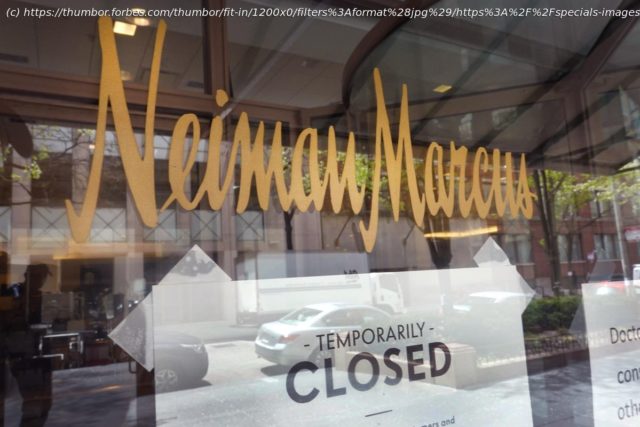Department store woes have little to do with Neiman’s problems.
As a former senior executive at the Neiman Marcus Group (though gone for more than a decade now) it certainly fills me with sadness to learn that the iconic luxury retailer filed for bankruptcy this morning. Though, as I wrote about nearly a year ago, this news is hardly surprising.
Another feeling I have is frustration, largely stemming from the false narratives and misinformation surrounding what this all means for the more than century old brand. Let’s first dispense with the easy stuff. No, a Chapter 11 bankruptcy is not the same as a liquidation. And, no, this doesn’t mean that merchandise deals will be any better than had they not filed. Any significant markdowns are the result of merchandise sell-through being whacked by the pandemic shutdown.
Now on to the bigger issues of what’s really going on and what it likely portends for the future.
Don’t blame COVID-19. The fact that pretty much all non-essential retail ground to a halt at the worse possible time for fashion and luxury brands contributed to the timing of the filing, but the company has been struggling under an unsustainable capital structure for years. Let’s be blunt: When Ares and the Canadian Pension Plan Investment Board acquired the company in 2013, they paid a stupidly high price and saddled the company with a crazy amount of debt. An eventual bankruptcy filing was nearly a foregone conclusion, short of a miracle happening.
Don’t blame the shift to online shopping either. While growing competition from the likes of Net-a-Porter, Farfetch, TheRealReal and many others, along with its own vendors’ dialing up of direct-to-consumer efforts, makes it difficult for Neiman’s to gain relative market share, luxury e-commerce remains largely Amazon
AMZN proof. Moreover, Neiman’s began building out its online presence nearly 20 years ago and now does nearly one third of its business online. Said differently, they have more than held their own and the profitability of the channel is likely robust.
Department store woes have little to do with Neiman’s problems. It’s easy to throw Neiman Marcus into the mix of the well known, long-standing struggles of mall-based anchor stores. Easy, but mostly wrong. First of all Neiman Marcus’ sales productivity and operating profit margins have been far better than the Sears, JC Penney
JCP’s, Dillard’s
DDS and Macy’s
M of the world for a long, long time.
Домой
United States
USA — Science The Neiman Marcus Bankruptcy: Separating The Myths From The Realities.






